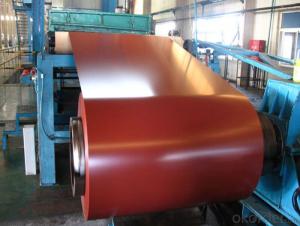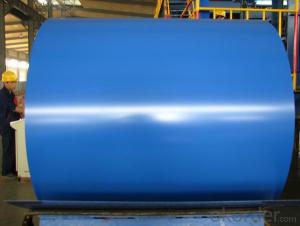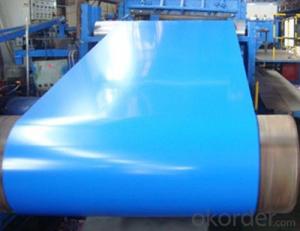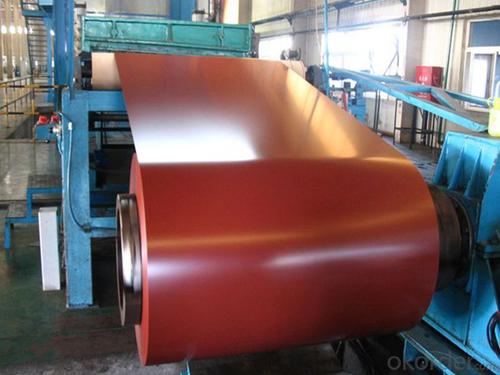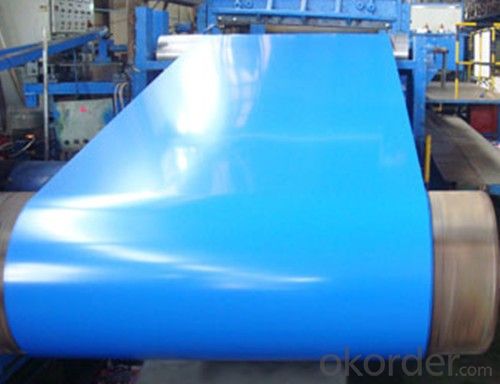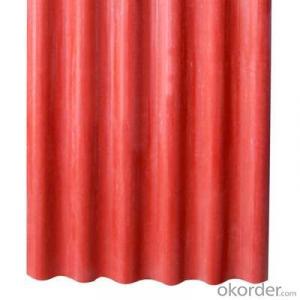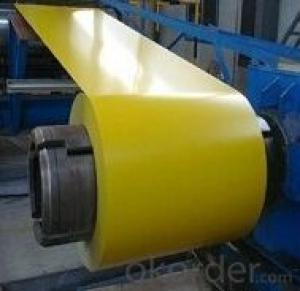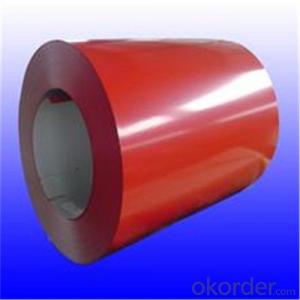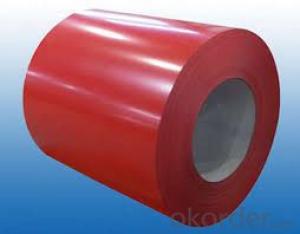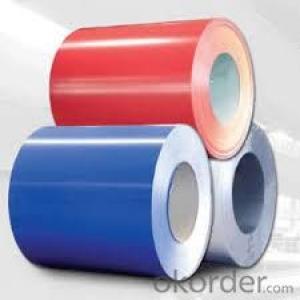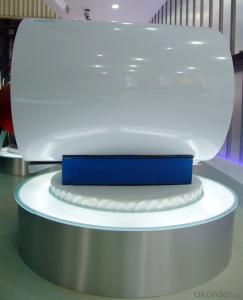CGCC Color Coated PPGI Pre-painted Steel Coils/ Prepainted Galvanized Steel Sheet
- Loading Port:
- Tianjin
- Payment Terms:
- TT or LC
- Min Order Qty:
- 25 m.t.
- Supply Capability:
- 50000 m.t./month
OKorder Service Pledge
OKorder Financial Service
You Might Also Like
1.CGCC Color Coated PPGI Features:
. Zinc coating :40-275g( as required)
. Thickness:0.17-1.2mm
. Width:914-1250mm(900mm,1215mm,1250mm,1000mm the most common)
. Coil Id:508m610mm
. Coil Weight: 3-12(as required)
. Color: All RAL color or customized
. Packing: Standard seaworthy packing or according to users' need
. Surface treatment: cremated, oiled, skin passed
. Spangle: regular,small, zero
2. Application of CGCC Color Coated PPGI:
With excellent cold bending molded manufacturablity, good decoration effect, strong anti-corrosion ability, galvanized steel coils and sheets are also pollution-free and easily recycled. Accordingly, they can be used as final products and basic plates of color coated steel coils and widely applied in construction, home appliances, decoration, ect.
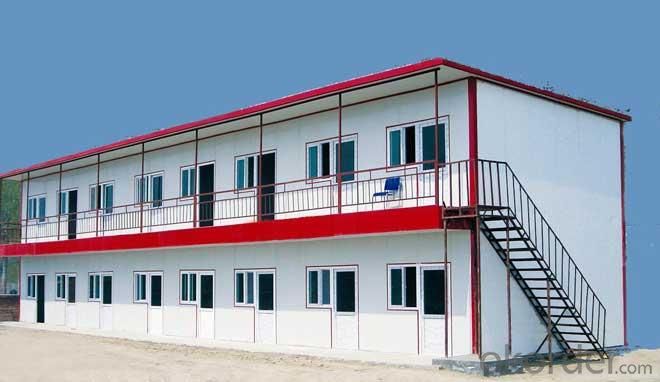
3.CGCC Color Coated PPGI Specifiction:
Standard: | AISI,ASTM,BS,DIN,GB,JIS | Grade: | DX51D,SGCC,SPCC,CGCC | Thickness: | 0.17-1.2mm |
Place of Origin: | Taian China (Mainland) | Brand Name: | HengJi | Model Number: | HJ |
Type: | Steel Coil | Technique: | Cold Rolled | Surface Treatment: | RAL color cremated, oiled, skin passed |
Application: | building metal roofing components,house appliance | Width: | 914-1250mm | Length: | customized |
Price: | favorable price | Our Customers | Steel force, Stemcor, Duferco, Samsung , G&G,Hyosung,CNBM | ||
4.CGCC Color Coated PPGI image:
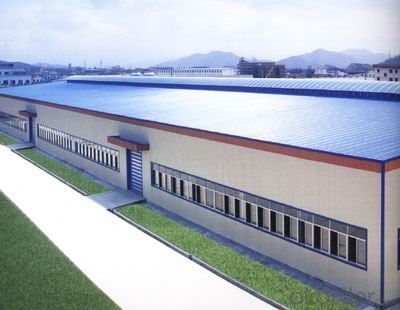
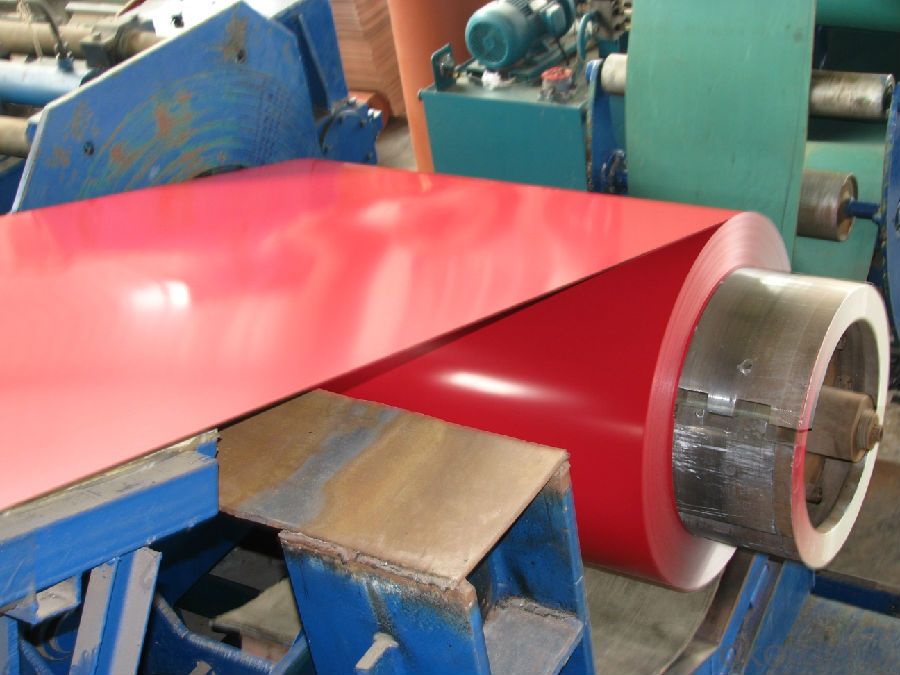
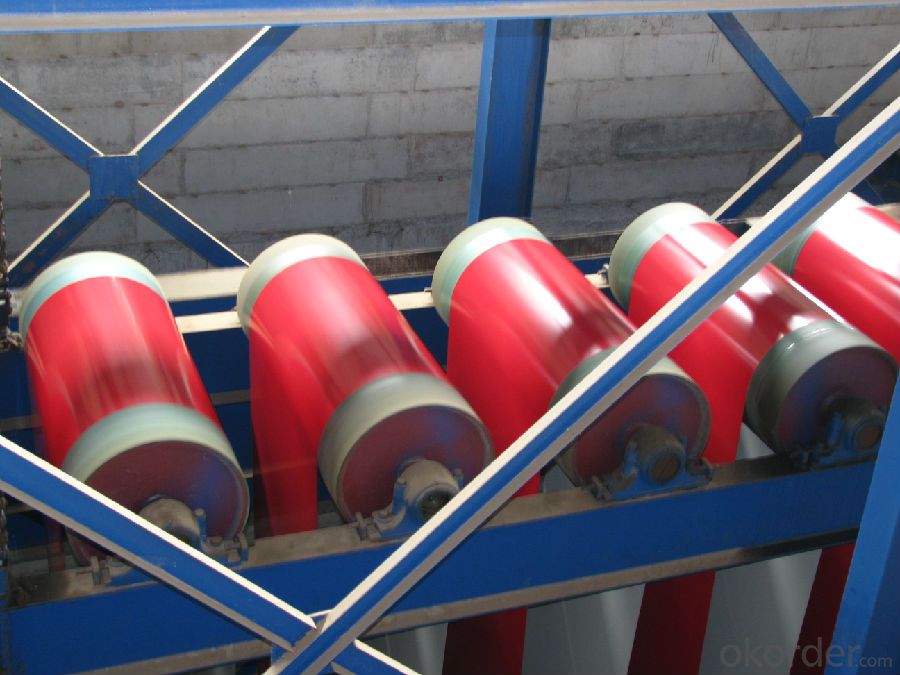
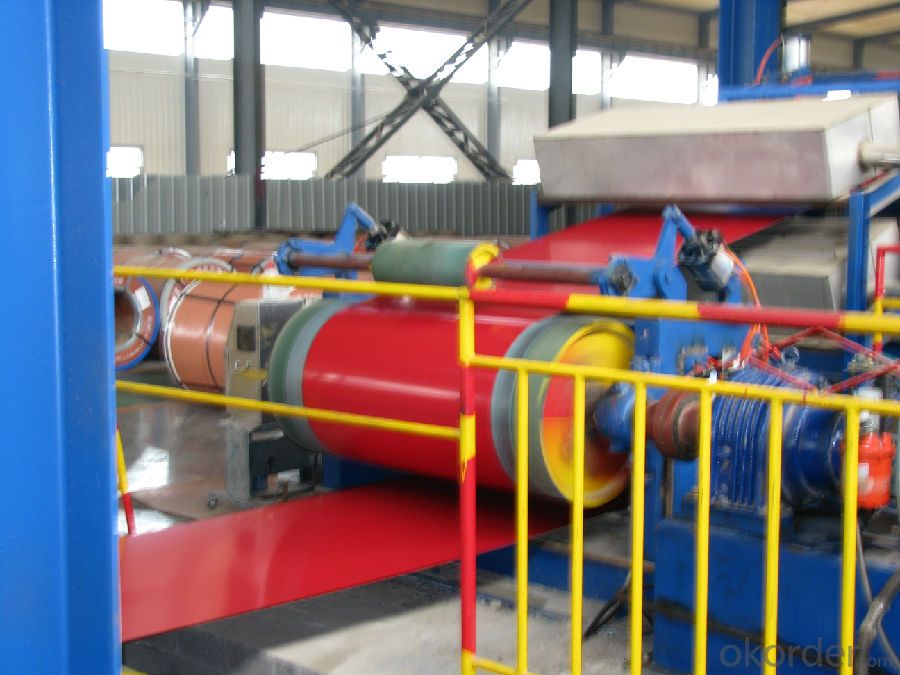
5.FAQ
We have organized several common questions for our clients,may help you sincerely:
①How about your Warranty?
Warranty: 1-Year for the whole light. Warranty is based on correct storage, installation, using and maintenanc
②How to guarantee the quality of the products?
We have established the international advanced quality management system,every link from raw material to final product we have strict quality test;We resolutely put an end to unqualified products flowing into the market. At the same time, we will provide necessary follow-up service assurance.
③How long can we receive the product after purchase?
In the purchase of product within three working days, We will arrange the factory delivery as soon as possible.
- Q: How are steel coils used in the manufacturing of shock absorbers?
- Steel coils are commonly used in the manufacturing of shock absorbers as they provide the necessary strength and flexibility to absorb and dampen shocks and vibrations. These coils are typically placed inside the shock absorber to support the weight of the vehicle and absorb the impact caused by uneven road surfaces. The coiled steel springs compress and expand to absorb the energy from the shocks, ensuring a smoother and more comfortable ride for the vehicle occupants.
- Q: How are steel coils inspected for formability using forming tests?
- To assess their ability to be shaped into desired forms without any defects or failures, steel coils undergo inspections for formability through the use of forming tests. These tests are conducted to evaluate the mechanical properties of the material and determine if it is suitable for specific applications. Forming tests consist of subjecting the steel coil to different forming operations, such as bending, deep drawing, or stretch forming. The coil is typically cut into specific dimensions and then subjected to these operations using specialized equipment. The main objective is to replicate the actual forming process that the steel will experience in real-world applications. During the forming tests, several parameters are carefully monitored. These parameters include the amount of force or load applied, the rate of deformation, and the resulting strain or deformation experienced by the steel. Additionally, the response of the coil to these operations is observed, including any visible defects like cracks, fractures, or surface imperfections. By thoroughly analyzing the performance of the steel coil during the forming tests, various characteristics related to formability can be determined. These characteristics include the material's ability to resist deformation, its capacity to withstand strain without failure, and its tendency to exhibit defects under specific forming conditions. The results obtained from these tests provide valuable insights into the suitability of the steel coil for particular forming processes and applications. Furthermore, advanced techniques such as digital image correlation and strain analysis can be utilized to precisely measure and evaluate the distribution of strain across the surface of the steel coil. These techniques assist in identifying areas of the coil that experience higher strain and potential points of failure. In summary, the formability of steel coils is assessed through forming tests that simulate the actual forming processes they will undergo. These tests evaluate various formability characteristics, including the material's resistance to deformation and its likelihood of defects. The results obtained from these tests aid in determining the suitability of the steel coil for specific applications and guide the selection of appropriate forming parameters.
- Q: How are steel coils inspected for impact resistance using impact testers?
- Steel coils are inspected for impact resistance using impact testers by subjecting them to controlled impacts of varying force and measuring the resulting deformation or damage. The testers typically consist of a pendulum or a falling weight that strikes the surface of the coil, simulating real-life impacts. The force and velocity of the impact can be adjusted as per the testing requirements. The extent of deformation or damage is then visually assessed or measured using specialized equipment, providing valuable information about the coil's ability to withstand impacts and potential performance in real-world applications.
- Q: Myself, iam Working In a Steel Fabrication Company. I completed my Engineering in 2006 and immediately recruited in this company in Oman. My company is Steel Fabrication company .So as i am new to this field, i just need some basic knowledge regarding this Steel Fabrication.Waiting for ur early reply.
- Steel fabrication involves the joining together of different types and sizes of steel members e.g when you are constructing a truss. This will include welding or bolting together those members as specificified on engineering drawings though sometimes you have to design/provide a suitable connection yourself. You have to ensure that all connections are adequate/ will not fail in service. You will also have to produce steel fabrication drawings showing various details and these you will send to the design engineer for his approval before you commence the actual fabrication.
- Q: I know aluminum is lighter but I'm looking at a 01 bianchi grizzly mountain bike which is steel. I used to ride a specialized stumpjumper m4 which was aluminum. It was quite light so I don't know if I'll like a bit heavier bike but overall what is better from those who have had both?
- I've ridden steel, alum, Ti and carbon. I like 'em all. It all depends of craftsmanship and design IMHO. Really, a light steel frame is only about 1 to 1.5 lbs heavier than other super light frames. Steel has a rep for being heavy and most of that comes from being a heavier duty frame and being spec'ed with heavier parts. With that being said I have 2 alum and 1 carbon framed bikes now. I owned several steel bikes in my day, loved 'em too. I like light and if you're a weight weenie too you may not want a heavier bike regardless of material. The Stumpjumper is a sweet light bike. If the Grizzly is up to your specs give it a go. Thats how you experience life. Try something different. You'll like the feel of steel, as of the bike? Only you will know if you like it or not.
- Q: Can steel coils be used in high-temperature applications?
- Yes, steel coils can be used in high-temperature applications. Steel is known for its excellent heat resistance and can withstand elevated temperatures without significant loss of strength or deformation.
- Q: Okay, I have looked all ovcer the net and it says diamonds are stronger, but why? I mean, why is diamonds used for the top equiptment rather than steel?
- Because diamonds are denser but a lot more brittle they would break if used the same as most steel also they are vary rare so useing them in mass production would be redecliously expencive.
- Q: What are the different types of steel coils?
- There are several different types of steel coils, including hot-rolled coils, cold-rolled coils, galvanized coils, and stainless steel coils.
- Q: How are steel coils used in the manufacturing of seat structures?
- Steel coils are commonly used in the manufacturing of seat structures as they provide strength and durability. These coils are typically shaped and molded into springs that are then integrated into the seat cushions and frames. The steel coils help to provide support and enhance the overall comfort of the seats by ensuring proper weight distribution and minimizing sagging over time.
- Q: What are the different methods of coil flattening for steel coils?
- Coil flattening for steel coils can be achieved through various methods, each having its own advantages and limitations. Some commonly employed techniques are as follows: 1. Roller leveling: By passing the steel coil through a series of rollers that exert pressure, this method flattens the coil. The rollers can be adjusted to achieve the desired level of flatness. Roller leveling is a versatile approach capable of handling a wide range of coil sizes and thicknesses. 2. Precision leveling: This method employs a more advanced leveling machine that applies pressure to specific areas of the coil to eliminate any waviness or defects. Precision leveling is commonly used for high-quality steel coils that require exceptionally flat surfaces. 3. Stretch leveling: Also known as tension leveling, this technique involves stretching the steel coil beyond its yield point, causing permanent deformation and flattening. Stretch leveling is frequently used for thinner gauge coils and effectively eliminates coil set and crossbow defects. 4. Temper rolling: This method subjects the steel coil to a controlled low-temperature heat treatment followed by cold rolling. The combination of heat and cold rolling helps relieve internal stresses and improve flatness. Temper rolling is particularly suitable for coils that require enhanced surface quality. 5. Laser flattening: This advanced method utilizes laser technology to selectively heat and flatten specific areas of the coil. Laser flattening is highly precise and capable of correcting localized defects or unevenness. However, due to its higher cost, it is typically used for smaller coils. It is essential to consider various factors, such as desired flatness requirements, coil dimensions, material properties, and production budget, when selecting the most appropriate coil flattening method.
Send your message to us
CGCC Color Coated PPGI Pre-painted Steel Coils/ Prepainted Galvanized Steel Sheet
- Loading Port:
- Tianjin
- Payment Terms:
- TT or LC
- Min Order Qty:
- 25 m.t.
- Supply Capability:
- 50000 m.t./month
OKorder Service Pledge
OKorder Financial Service
Similar products
Hot products
Hot Searches
Related keywords
